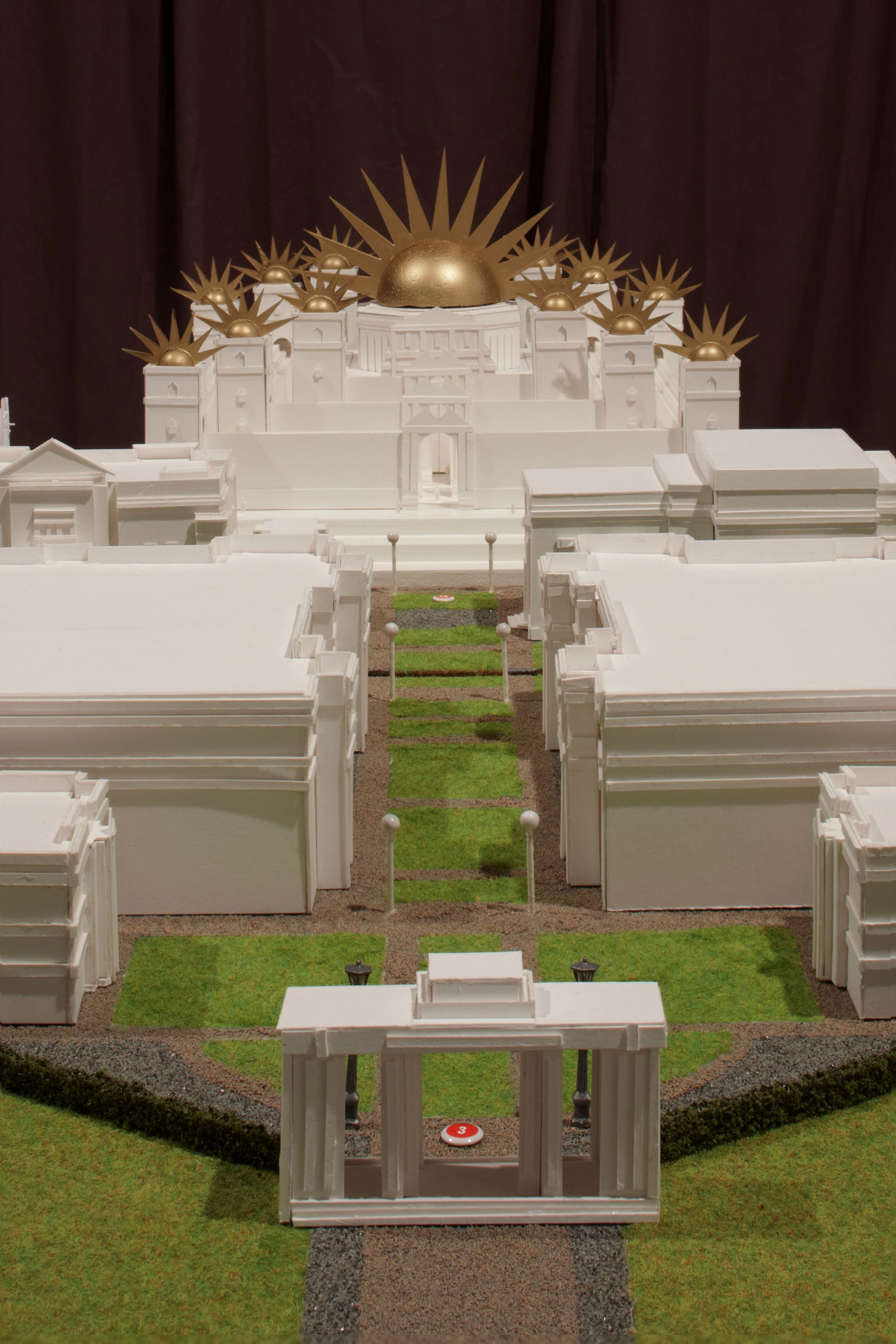
Empire City: The World on One Street, 2009
architectural model (detail)
‘AADIEU ADIEU APA (Goodbye Goodbye Father)’, 2009
solo show, Gasworks, London
This solo exhibition delved into the history of mass public spectacle in the UK, in order to explore some of the ways in which British national identity has been constructed. The sculpture, video, posters and banners that made up the show, highlight the place of pageantry, theatricality and ritual in British public life – still used today by a patrician elite to narrate a nationalist version of history sympathetic to their own interests.
Filling the gallery at Gasworks was an architectural model, titled Empire City: The World on One Street. It represents the British Empire Exhibition, which took place in the West London suburb of Wembley in 1924. Made to function like a museum diorama, it is a teaching tool using display methods from the past, to demonstrate the relationship between imperialism, trade and religion.
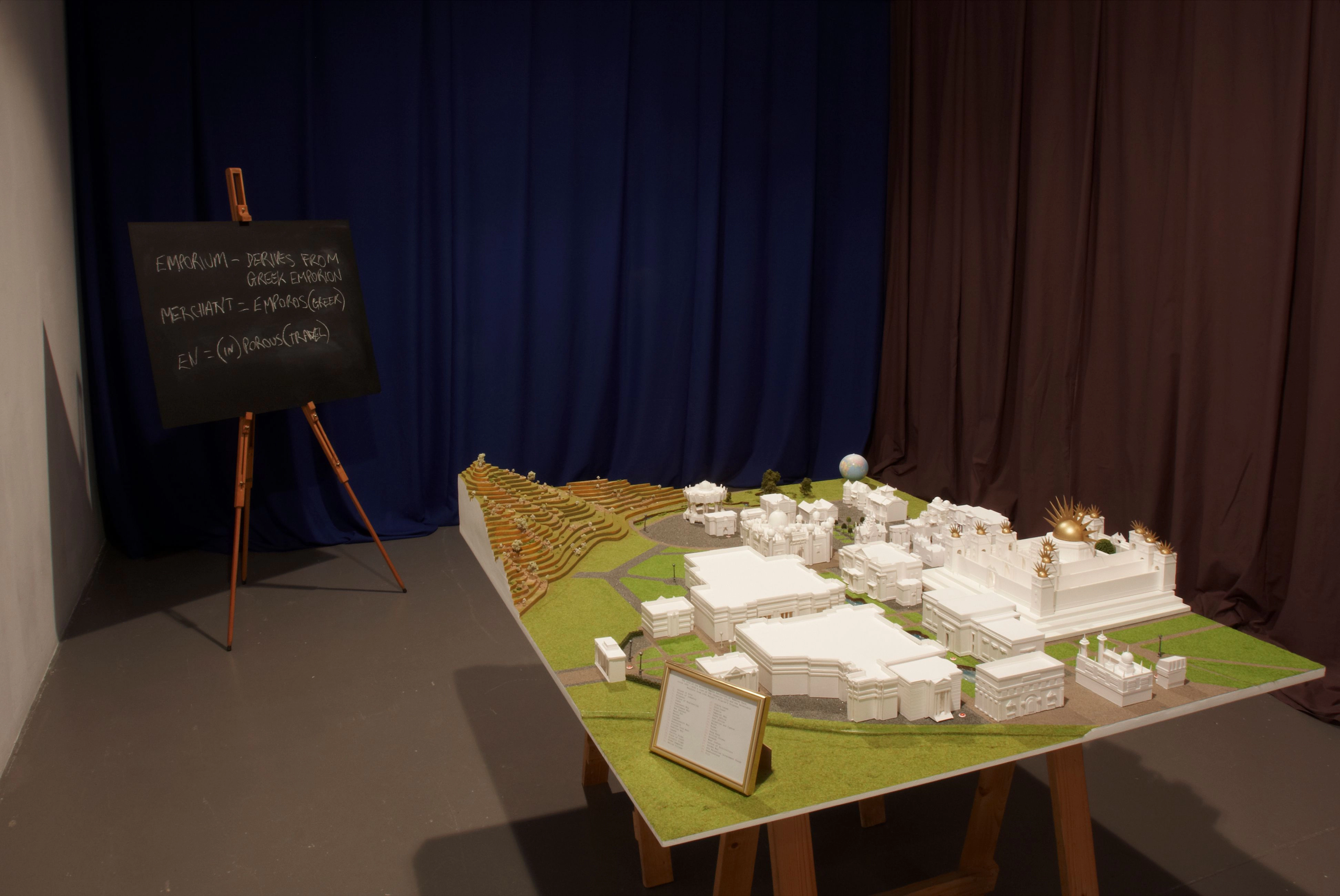
Empire City: The World on One Street, 2009
architectural model, black board in ‘Aadieu Adieu Apa (Goodbye Goodbye Father)’, Gasworks, London
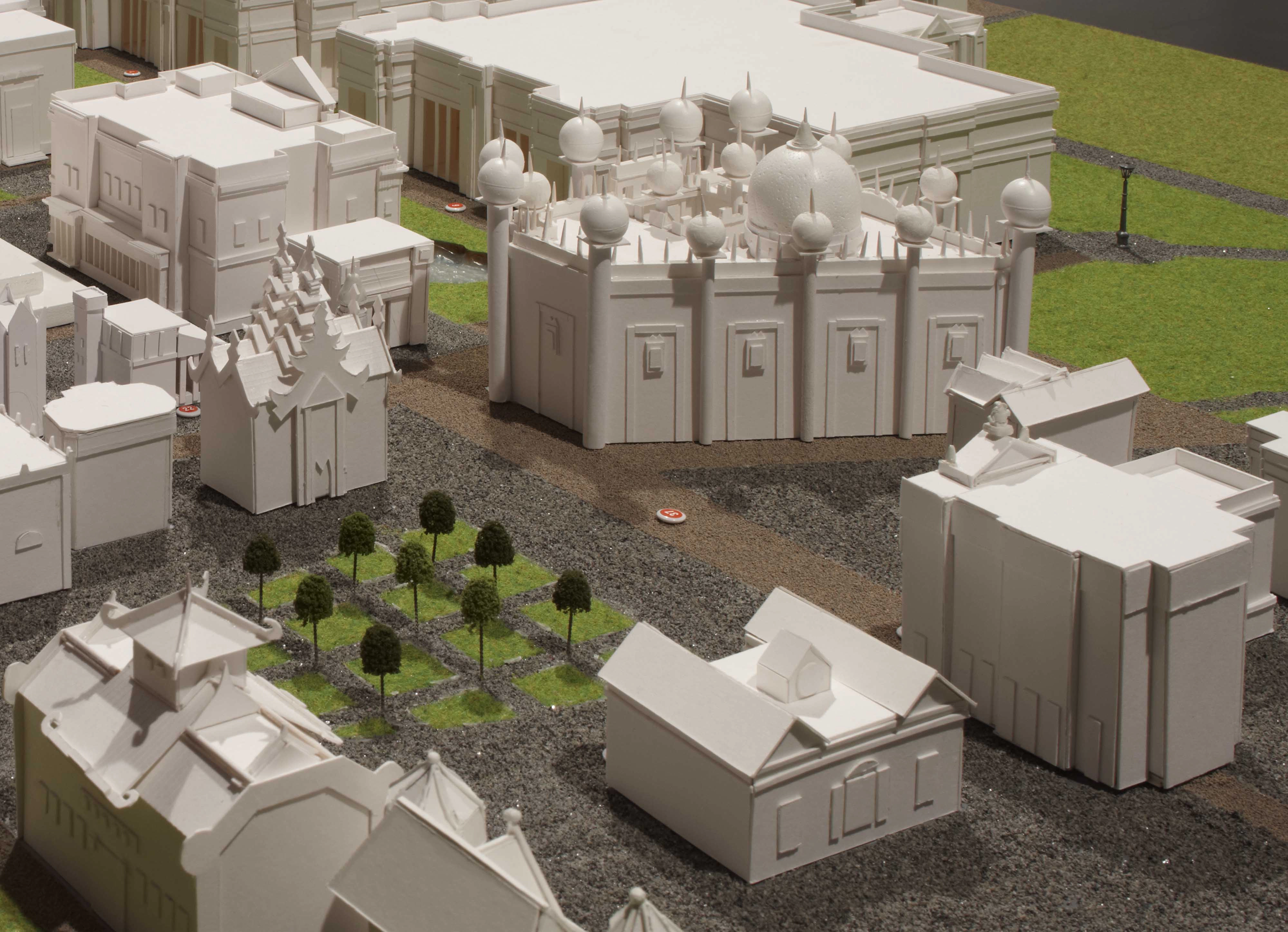
Empire City: The World on One Street, 2009
architectural model (detail)
As an event, the purpose of the British Empire Exhibition was to educate the public during their leisure time about Britain’s trading relationships with its colonies and bolster support for imperialism. In 1924 it was the largest exhibition that had been staged anywhere in the world, and the pavilions were piled high with theatrically displayed commodities, produced by the countries Britain ruled over. One of the most absurd examples was a life-sized refrigerated statue of the Prince of Wales riding a horse, carved in butter, which occupied the Canada pavilion. At that time, butter was one of Canada’s main exports to the UK. Human exhibits were also included, with over 60 west-African people housed in ‘native villages’ in the pavilions representing Gold Coast (now Ghana), Nigeria and Sierra Leone. The model mixes the plan of the British Empire Exhibition with the fictional topography of John Bunyan’s widely read evangelical allegory The Pilgrim’s Progress (1678).
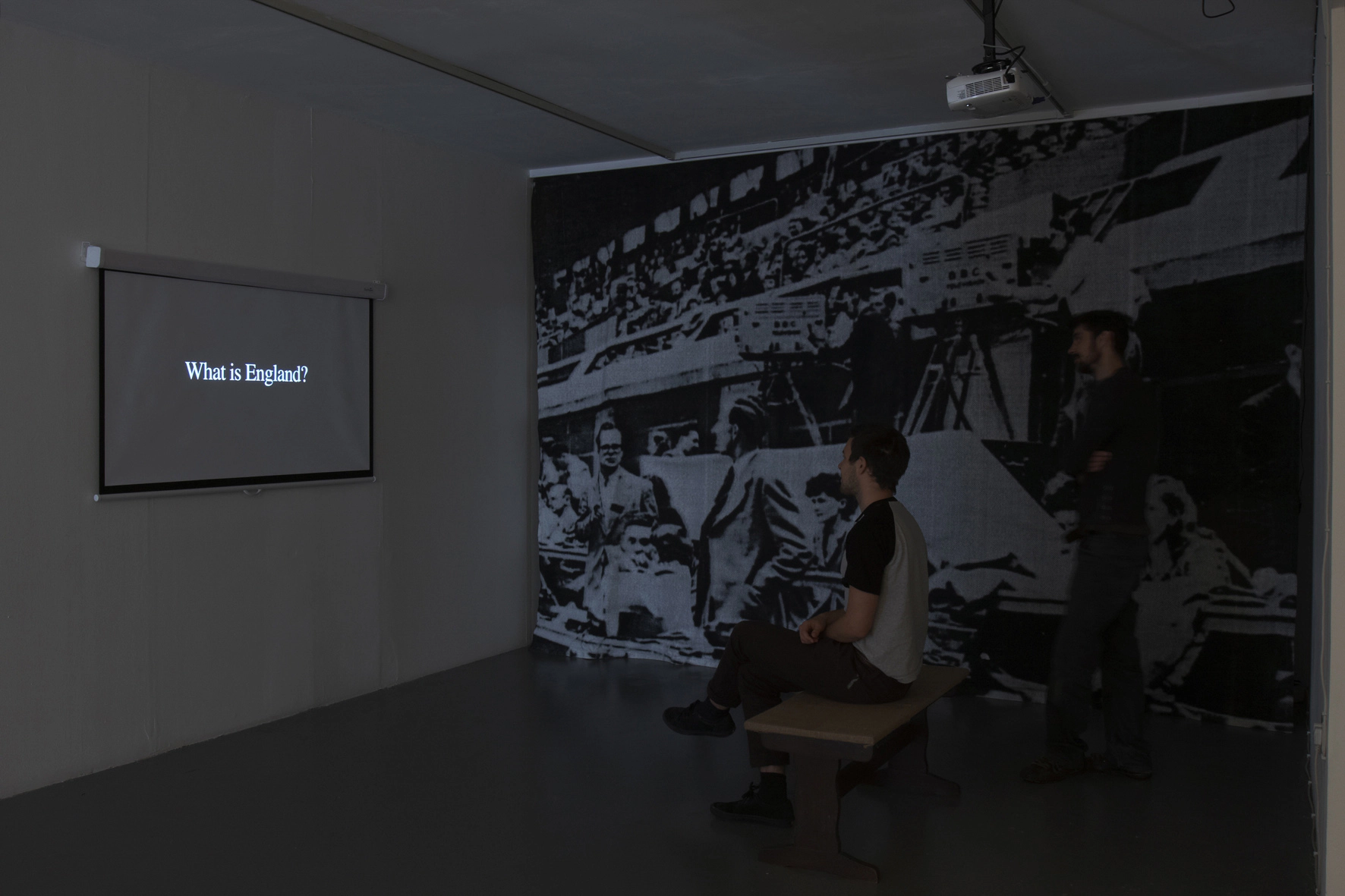
What is England?, 2009, video, 35 min. 2 sec., printed fabric banner, in ‘Aadieu Adieu Apa (Goodbye Goodbye Father)’, Gasworks, London
The accompanying video, titled What is England? (2009), is a lecture delivered by a fictional Minister for Tourism on English history and culture. In the 1920s, the British Empire Exhibition was the main engine behind the westward expansion of London and was used to advertise and promote new ways of living. These were suburban lifestyles in which ‘pioneers’ and their families were encouraged to settle in the ‘colonies’ surrounding Wembley. The video borrows from these advertisements, contrasting their bombastic descriptions with contemporary footage of Wembley stadium, the nearby market and residential areas. The installation drew parallels between the British Empire Exhibition and the 2012 London Olympics, which similarly exemplified the ideologies of progress and competition. The 2012 Olympics were already looming large in 2009, when the work was made, forcing change on the urban landscape and altering the demographics of whole districts of East London.
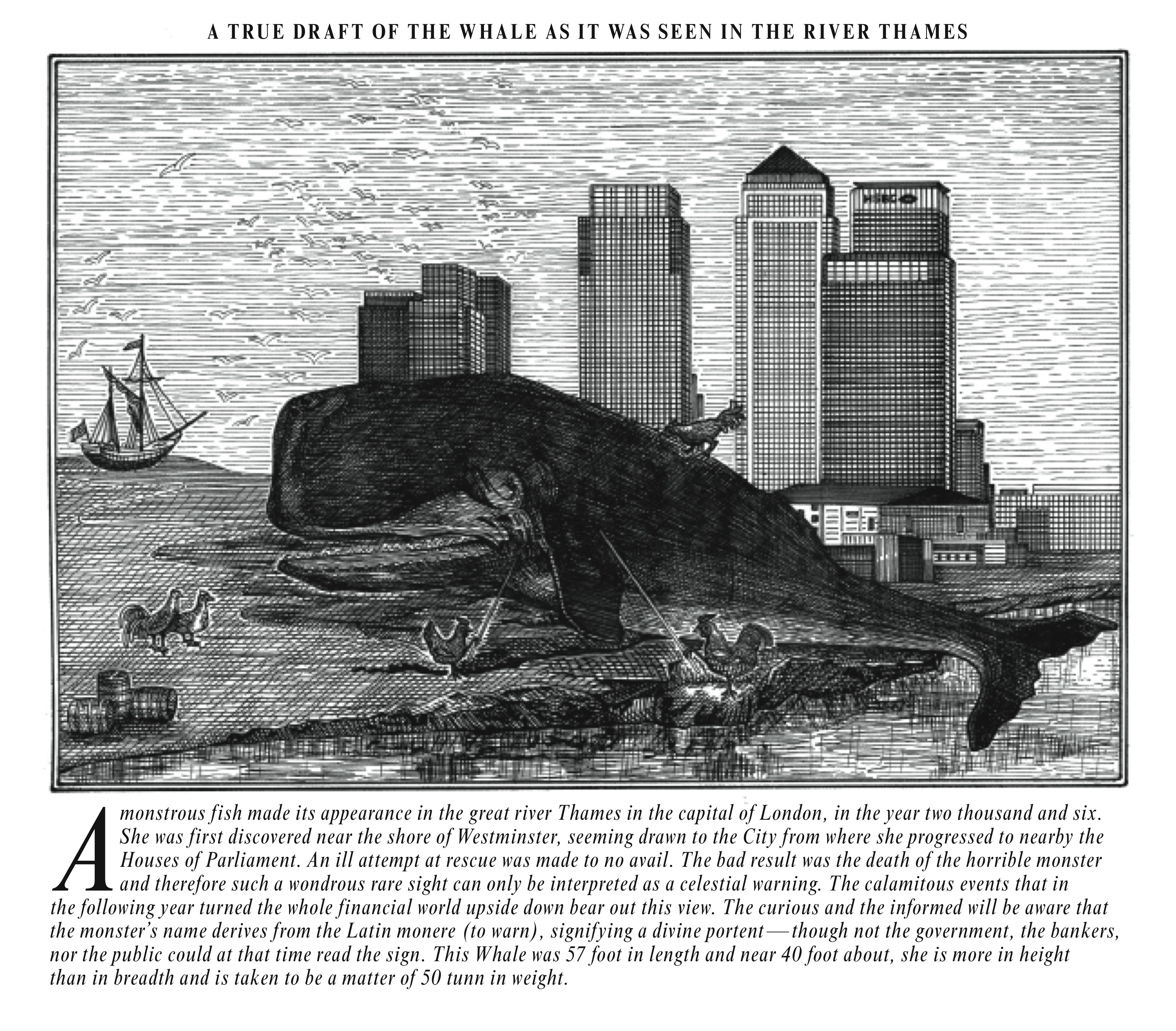
The Thames Whale, 2009, printed poster
The exhibition also included a series of allegorical posters, which circle around the themes of history, nationalism and the financial system. The posters depict events ranging from the suffragette Mary Richardson’s attack on the Velázquez painting of Venus at the National Gallery in 1914, to the use of anti-terrorist law by the British government to seize Icelandic bank assets, following the 2008 banking collapse. Playing with genres such as broadsheet announcements of monstrous animals, newspaper front pages and theatre playbills, they draw on my long-standing interest in the history of political satire and popular printing.
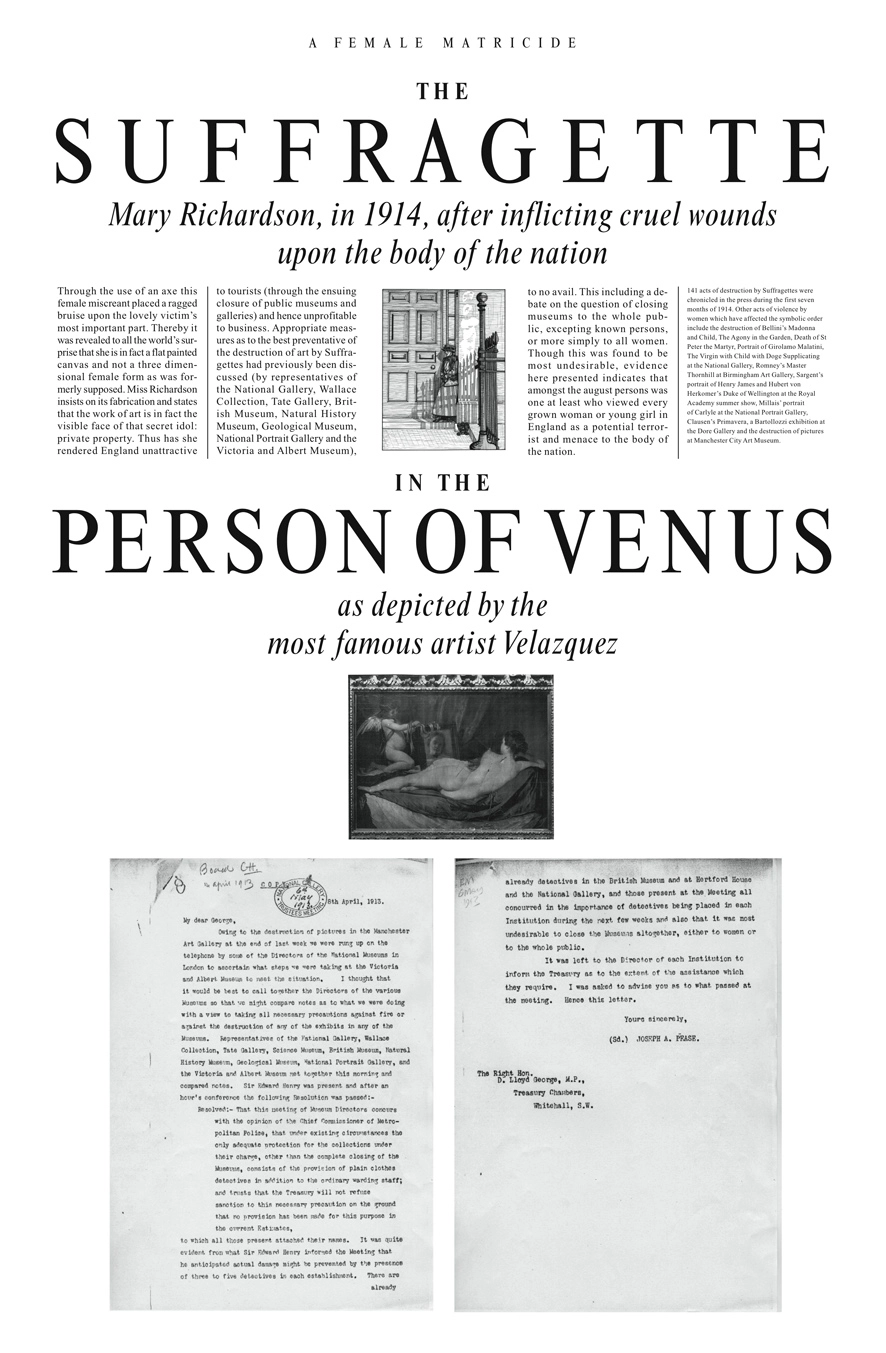
A Female Matricide, 2009, printed poster
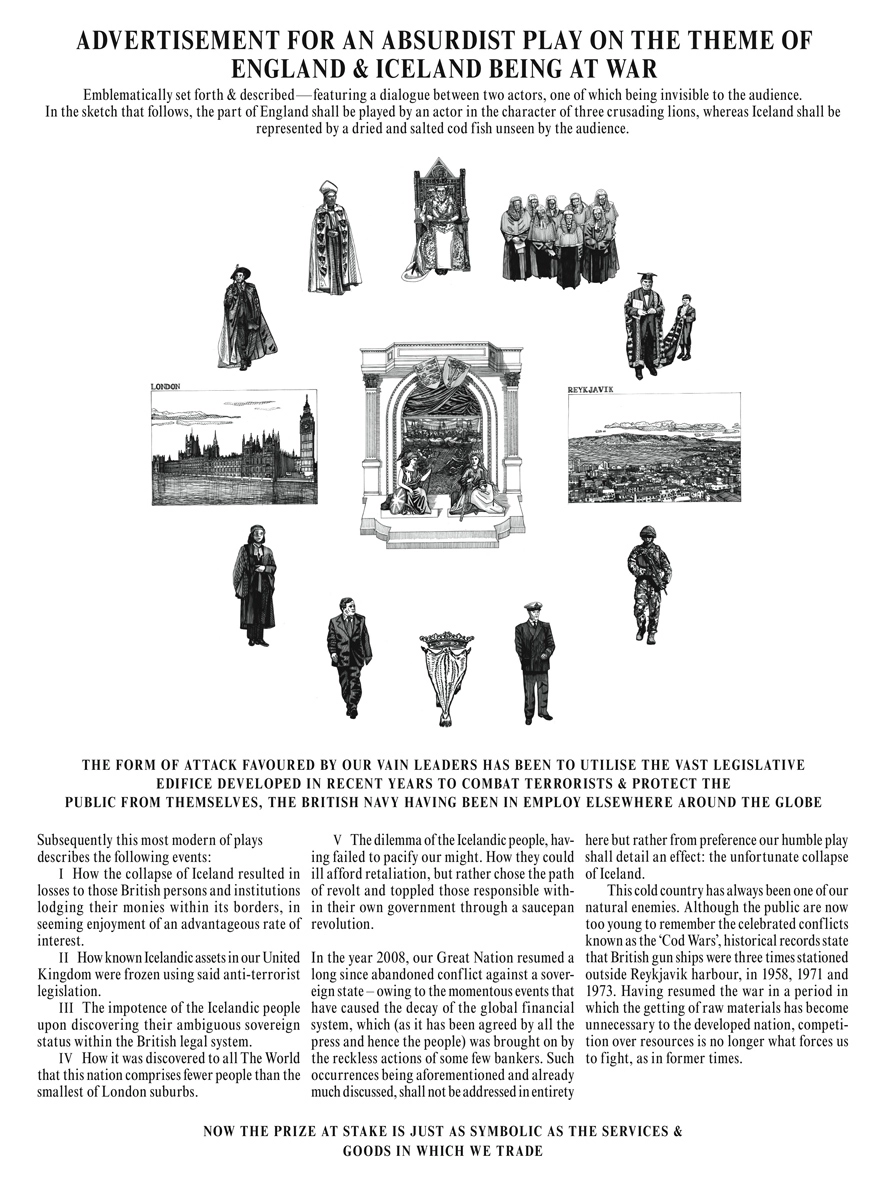
Advertisement for an Absurdist Play on the Theme of England and Iceland Being at War, 2009, printed poster
Further Reading
‘Olivia Plender: AADIEU ADIEU APA (Goodbye Goodbye Father)’, Gasworks Gallery, London, 2009
(view here)Time Out review by Sally O’Reilly of ‘Aadieu Adieu Apa (Goodbye Goodbye Father)’, Gasworks Gallery, 2009
(download)